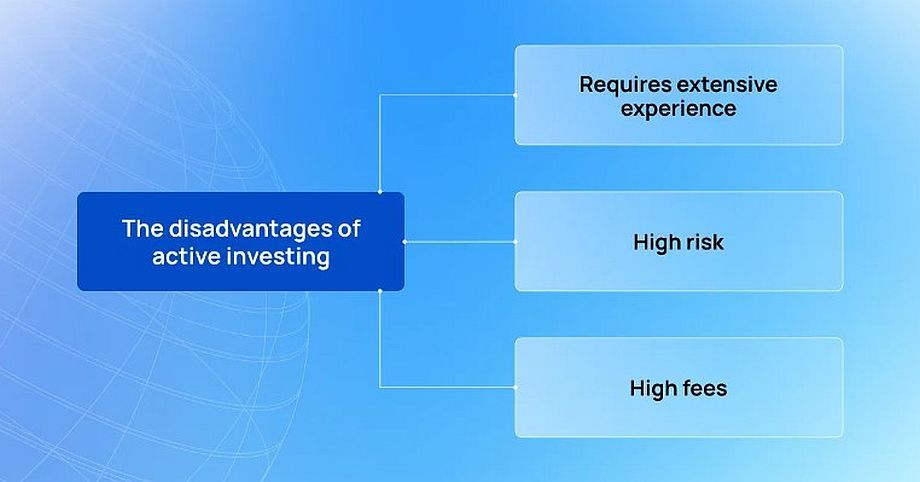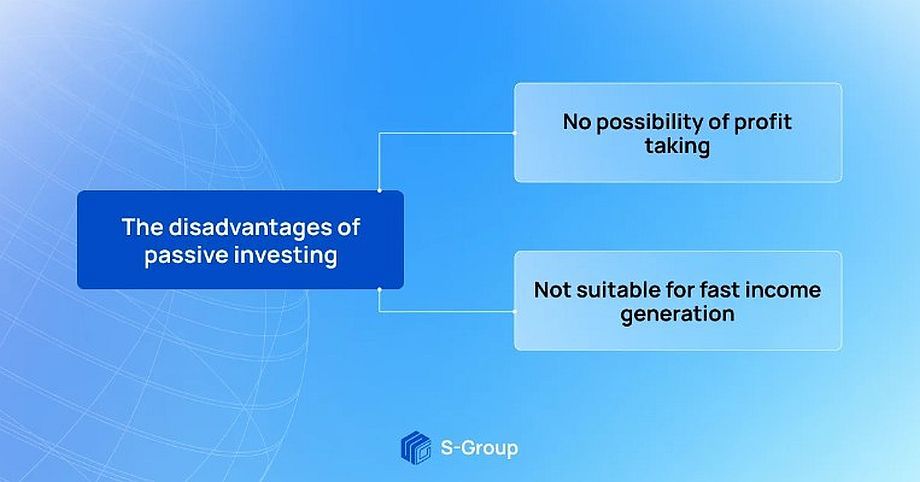Passive VS Active investing: which to choose
Passive and active investing are two opposing strategies which help to multiply capital. In this new S-Group blog article, we will look at passive VS active investing, and the advantages and disadvantages of each strategy.
Active investing: definition and advantages
Active investing is a strategy that involves frequent trading on the market with a hands-on approach and requires someone to act as portfolio manager. This can be the investor themselves, a trustee or exchange-traded funds that provide a ready-made portfolio of hundreds of investments.
The goal of active investing is to outperform the average return of the stock market and make the most of short-term price fluctuations.
Active investing requires an investor to have a deeper analysis of the market, as well as a lot of experience and an understanding of how asset prices change depending on different situations in the economy.
Without constant attention and market analysis, even the most carefully planned investment portfolio can be subject to volatile market fluctuations, causing an investor to incur short-term losses that can affect long-term goals. Active investing will not suit investors who are interested in long-term investments.
Advantages of active investing
+ Flexibility in volatile markets
Active investing allows for flexibility in highly volatile markets. Investors can reallocate assets by earning on equities and stabilizing income with bonds.
+ Expanded trading options
Active investors can use different trading strategies. For example, trading options or opening short positions will help generate additional income.
+ Tax management
A qualified financial adviser or portfolio manager can use active investing to make trades that offset gains for tax purposes. This is called tax loss harvesting.
+ Making more profits
Experienced investors can use their knowledge to research the market and find the most promising asset to invest in. But, it should be noted that this will require experience and a high degree of expertise.
Disadvantages of active investing
– Requires a lot of experience
For active investing to be profitable, an investor must have excellent knowledge in the financial field and have a lot of experience in trading in financial markets.
– Higher risk
Active investing means greater profit; however, it involves greater risk of losing money if the wrong investments are made. Weak portfolio diversification will not allow you to survive the collapse of one company’s sector and compensate for losses by rising prices in another market.
– High commissions
A lot of investor’s money is spent on commissions and spreads, which reduces income.
Passive investing: definition and benefits
Passive investing is a strategy that involves buying and holding assets over the long term. In other words, it is a “buy and hold” strategy, an investor buys assets and “forgets about them” for a certain amount of time.
Passive investing involves maximizing profits by performing a minimum amount of trading activities. Passive investors hold stocks and bonds for a long time. When investing passively, it’s important to follow a basic pattern: the market always rises in the long run and has an overall positive return.
Passive investors build well-diversified portfolios of stocks and bonds with a stable performance. They do not try to capitalize on short-term price fluctuations. The goal of passive investing is to gradually multiply their capital and earn regular returns.
Advantages of passive investing
+ Low costs
Passive investing strategy doesn’t require investors to make lots of trades, resulting in lower fees and commissions. In addition, passive investing involves making one or two deposits for a long period of time, which also reduces the cost of money.
+ Reduced risk
With passive investments, the risk of losses due to economic crises and quotes decrease, as the investment is made for a long period of time. This means that over time, quotes will return to their previous levels and the investor will still make a profit.
+ Requires less time
Passive investors do not need to spend a lot of time studying the market, analyzing and doing research to choose the best investment assets. This way, you have free time to do whatever you want instead of worrying about investments.
+ Low entry threshold
Beginners can start investing without much knowledge or a lot of capital. All you need to do is choose a small group of assets and periodically analyze your investment portfolio.
Disadvantages of passive investing
– No possibility of profit taking
Passive investing does not require the constant presence of the asset holder. In case of a crisis, market crash or negative news, the investor has no possibility to fix profits, sell assets or invest them into other instruments. Such situations require strong nerves and good judgment not to panic and sell out the entire portfolio.
– Not suitable for generating quick income
Passive investing is not suitable for earning high returns in a short period of time. Therefore, if an investor needs to make a profit in a short period of time (less than a year), a passive investing strategy is not suitable.
Key takeaways Passive VS Active investing
When choosing your approach to investing, the main thing is to start from the goals you want to achieve. If stability, lack of risk and worry about changes in the market, as well as guaranteed returns are important to you, then passive investing is the way to go.
If you want to maximize your profits in a short period of time and are prepared to constantly analyze the market and its high volatility, active investing is the right option for you. There are no guarantees, but with the right approach and an effective trading strategy, investors can achieve high returns. So, there you have it – Passive VS Active investing, which one is the most suited to you?





